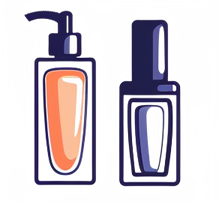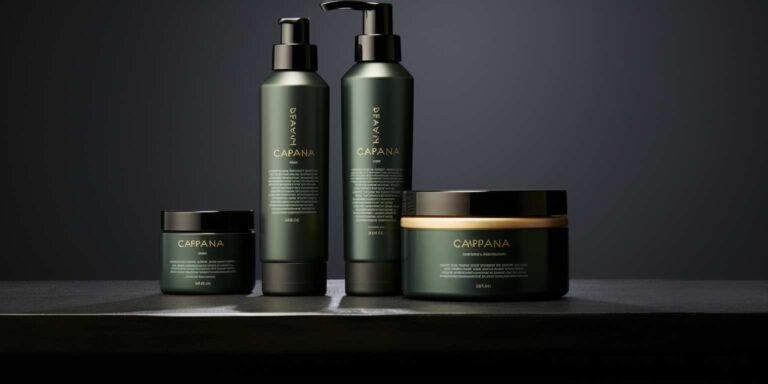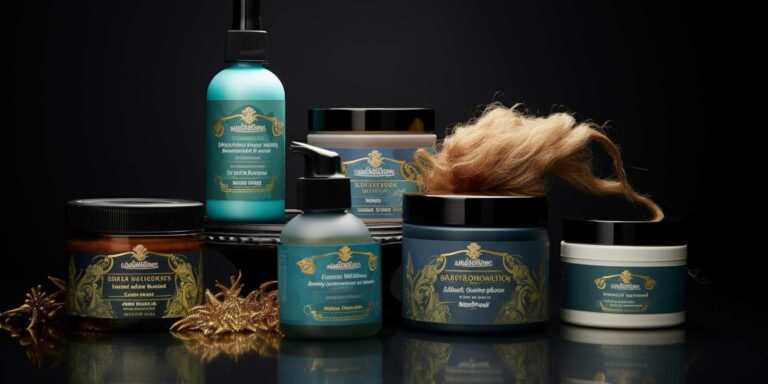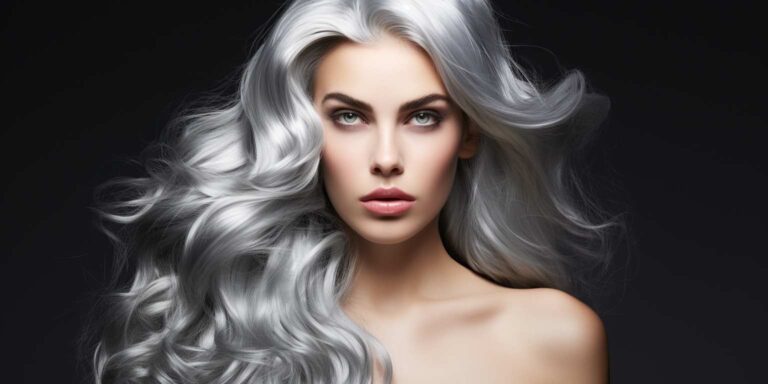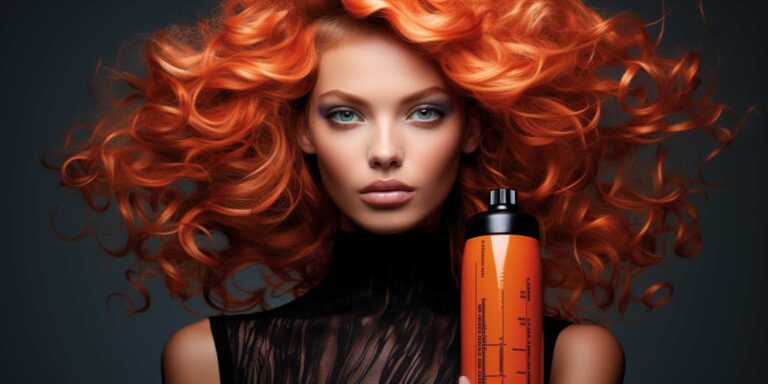How to choose the best hair fall shampoo for women
Understanding the Causes: Before delving into selecting a shampoo, it’s crucial to identify the underlying cause of hair fall. Whether it’s due to genetics, hormonal changes, stress, or environmental factors, knowing the root cause can help in choosing a shampoo tailored to address specific issues.
Key Ingredients to Look For: A good hair fall shampoo for women should contain ingredients known for promoting hair growth and strengthening hair follicles. Look for ingredients such as biotin, niacinamide, caffeine, keratin, and arginine, which are known to stimulate hair growth and improve hair health.
Avoid Harsh Chemicals: While selecting a shampoo, steer clear of products containing harsh chemicals such as sulfates, parabens, and silicones. These chemicals can strip the scalp of natural oils, leading to dryness and further exacerbating hair fall.
Hair Type Matters: Consider your hair type when choosing a shampoo. If you have oily scalp and fine hair, opt for a lightweight formula that won’t weigh down your hair. For those with dry or damaged hair, look for hydrating and nourishing shampoos that provide moisture and repair.
| Key Features to Consider: | Description: |
|---|---|
| Anti-breakage: | Look for shampoos that claim to reduce hair breakage, as this can help prevent further hair loss. |
| Scalp Health: | Choose shampoos that promote scalp health, as a healthy scalp is essential for hair growth. |
| Volume Boosting: | If you have thinning hair, consider shampoos that claim to add volume and thickness. |
| Natural Formulations: | Opt for shampoos with natural ingredients that are gentle on the scalp and hair. |
Read Reviews: Before making a purchase, take the time to read reviews from other users. This can provide valuable insights into the effectiveness of the product and help you make an informed decision.
Expert hair fall care tips
When it comes to combating hair fall, adopting a proactive approach is crucial. Whether you’re dealing with seasonal shedding or more persistent issues, implementing a few expert hair fall care tips can make a significant difference in maintaining the health and vitality of your locks.
First and foremost, it’s essential to understand the root causes of hair fall. Factors such as stress, poor nutrition, genetics, and environmental pollutants can all contribute to excessive shedding. Identifying the specific triggers for your hair fall can help tailor your approach to effectively address the issue.
Proper hair care routine plays a pivotal role in minimizing hair fall. Opt for gentle shampoos and conditioners formulated for strengthening and nourishing the hair follicles. Avoid overwashing, as excessive cleansing can strip the scalp of its natural oils, leading to dryness and breakage.
When washing your hair, use lukewarm or cool water instead of hot water, as high temperatures can damage the hair shaft and exacerbate hair fall. Additionally, massage your scalp gently while shampooing to stimulate blood circulation and promote healthy hair growth.
Conditioning is essential to keep your strands moisturized and manageable. Focus on applying conditioner primarily to the lengths and ends of your hair, avoiding the scalp to prevent product buildup, which can clog follicles and contribute to hair fall.
Avoid harsh chemical treatments such as bleaching, perming, and straightening, as these processes can weaken the hair structure and increase the risk of breakage. If you must color your hair, opt for gentler, ammonia-free dyes and limit the frequency of treatments.
Protecting your hair from heat damage is crucial in preventing hair fall. Before using hot styling tools such as hair dryers, straighteners, and curling irons, apply a heat protectant spray to shield your strands from high temperatures.
| Diet and nutrition | Healthy Hair Foods |
|---|---|
| Include protein-rich foods such as lean meats, fish, eggs, and legumes in your diet to support hair growth and strength. |
|
Stay hydrated by drinking an adequate amount of water daily to maintain the hydration levels of your scalp and hair. Dehydration can make your strands brittle and prone to breakage.
Your complete hair fall shampoo buying guide
If you’re battling with hair fall, finding the right hair fall shampoo is crucial for addressing the root of the problem. Here’s a comprehensive buying guide to help you make an informed choice and bid farewell to those pesky strands bidding adieu prematurely.
Understanding Your Hair Type: Before delving into the sea of hair fall shampoos, identify your hair type. Is it oily, dry, or a combination? Knowing this will guide you to a shampoo that caters specifically to your hair’s needs.
Key Ingredients to Look For: Opt for shampoos enriched with biotin, caffeine, and keratin. These ingredients strengthen hair follicles, stimulate growth, and prevent breakage. A sulfate-free formula is also advisable as sulfates can strip hair of essential oils, exacerbating hair fall.
Protein-Packed Formulas: Shampoos with added proteins like collagen or amino acids can fortify hair structure. Proteins are the building blocks of hair, and a deficiency can lead to increased hair fall.
Mild and Natural: Opt for shampoos with gentle, natural ingredients like aloe vera or tea tree oil. These substances soothe the scalp, reduce inflammation, and create a conducive environment for hair growth.
Avoid Harmful Chemicals: Stay away from shampoos containing harsh chemicals like parabens and phthalates. These can cause irritation and contribute to hair fall. Instead, opt for shampoos labeled as organic or chemical-free.
Check for DHT Blockers: Dihydrotestosterone (DHT) is a hormone linked to hair loss. Look for shampoos with DHT-blocking ingredients like saw palmetto or pygeum bark extract to counteract its effects.
Read Customer Reviews: Before making a purchase, go through customer reviews to gauge the effectiveness of the shampoo. Look for reviews from individuals with similar hair concerns to yours.
Budget Considerations: While there are premium hair fall shampoos, effective options are available across various price ranges. Consider your budget and explore products that fit your financial constraints.
Consistency is Key: Once you find a shampoo that suits your hair, stick to it. Consistent use allows the active ingredients to work their magic over time, promoting healthier and stronger hair.
Additional Tips: Complement your hair care routine with a balanced diet, stay hydrated, and avoid excessive heat styling. These lifestyle factors contribute significantly to the overall health of your hair.
Understanding the causes of hair fall in women
Hair fall in women can be attributed to various factors, ranging from hormonal changes to nutritional deficiencies. One of the primary culprits is hormonal imbalance, particularly during pregnancy, menopause, or conditions like polycystic ovary syndrome (PCOS). These hormonal shifts can lead to a condition known as telogen effluvium, where more hair follicles than usual enter the resting phase, resulting in noticeable hair loss.
Another significant factor is nutritional deficiency, particularly a lack of iron, zinc, and vitamin D. These nutrients play a crucial role in maintaining hair health, and their scarcity can contribute to weakened hair strands and increased shedding. Adopting a diet rich in these nutrients or considering supplements can often mitigate this cause of hair fall.
Stress is a common but underestimated factor in hair fall among women. The demands of modern life, both physical and emotional, can lead to increased levels of the stress hormone cortisol, impacting hair growth cycles. Practices such as meditation, yoga, or other stress-reducing activities can be beneficial in managing and preventing stress-related hair fall.
Furthermore, genetics also play a role in determining susceptibility to hair fall. If there is a family history of thinning hair or pattern baldness, there’s an increased likelihood of experiencing similar issues. While genetic factors are beyond one’s control, various treatments and interventions are available to manage and slow down the progression of hereditary hair loss.
Medical conditions such as thyroid disorders can impact hair health. An overactive or underactive thyroid can disrupt the normal hair growth cycle, leading to excessive hair loss. Seeking medical attention to address thyroid issues can often help in managing hair fall effectively.
Harsh styling practices and the use of chemical-laden hair products can also contribute to hair fall. Tight hairstyles, frequent use of heat styling tools, and exposure to harsh chemicals in hair dyes or styling products can damage the hair shaft and contribute to increased breakage and hair loss.
Ingredients to look for in hair fall shampoo
When it comes to choosing the right shampoo to combat hair fall, selecting the appropriate ingredients is paramount. A plethora of products floods the market, each boasting miraculous results, but discerning consumers know that the devil is in the details – or in this case, the ingredients list.
Navigating through the sea of options can be overwhelming, but fear not! Armed with knowledge, you can make an informed decision to promote healthier, stronger locks. Here are some key ingredients to look for in a hair fall shampoo:
| Ingredient | Benefits |
|---|---|
| Biotin | Boosts keratin production, strengthens hair follicles, and encourages healthy hair growth. |
| Caffeine | Stimulates hair follicles, promoting increased circulation to the scalp, which can help prevent hair loss. |
| Niacinamide | Improves scalp health, reduces inflammation, and supports the overall structure of the hair. |
| Ketoconazole | Helps combat dandruff and scalp infections, which can contribute to hair fall. |
| Saw Palmetto | Blocks the formation of DHT, a hormone linked to hair loss, making it an effective ingredient for reducing hair fall. |
Additionally, avoid shampoos containing harsh sulfates, such as sodium lauryl sulfate (SLS), as these can strip the scalp of its natural oils, leading to dryness and potential hair damage. Instead, opt for gentler surfactants like sodium lauroyl sarcosinate or cocamidopropyl betaine.
Furthermore, look for shampoos enriched with vitamins and antioxidants, such as vitamin E and green tea extract, to nourish the scalp and protect hair from environmental damage.
How to maximize results from your hair fall shampoo
Maximizing results from your hair fall shampoo requires more than just lathering and rinsing. It involves understanding your hair’s needs, choosing the right product, and implementing effective techniques.
Firstly, assess your hair type and condition. Is it oily, dry, or a combination? Is your scalp prone to dandruff or itchiness? Understanding these factors helps in selecting a shampoo tailored to your specific needs.
When selecting a shampoo, look for key ingredients known for promoting hair health and combating hair fall. Ingredients like biotin, caffeine, ketoconazole, saw palmetto, and minoxidil have been proven effective in reducing hair loss and stimulating growth.
Frequency of shampooing is crucial. While it’s tempting to wash your hair daily, overwashing can strip away natural oils, leading to dryness and breakage. Depending on your hair type, aim to shampoo 2-3 times per week, or as recommended by your dermatologist.
Proper shampooing technique can make a significant difference. Start by wetting your hair thoroughly with lukewarm water. Apply a small amount of shampoo to your palms and lather it gently onto your scalp, massaging in circular motions. Avoid using your nails to prevent scalp irritation.
Rinse your hair thoroughly with cool water to seal the cuticles and enhance shine. Follow up with a conditioner to hydrate and detangle your strands. Pay attention to the scalp massage while shampooing, as it stimulates blood flow, promoting hair growth.
Consistency is key when using a hair fall shampoo. Results may not be immediate, so be patient and stick to your routine. It typically takes several weeks to months to notice significant improvements in hair fall reduction.
Avoid using excessive heat styling tools such as flat irons and blow dryers, as they can weaken hair strands and contribute to breakage. Opt for air-drying whenever possible and use heat protectant products when heat styling is necessary.
Diet and lifestyle play a crucial role in hair health. Ensure you’re consuming a balanced diet rich in vitamins, minerals, and proteins essential for hair growth. Stay hydrated and manage stress levels, as stress can exacerbate hair fall.
Lifestyle changes to support hair fall treatment
When it comes to addressing hair fall, incorporating lifestyle changes alongside medical treatments can significantly enhance results. These changes are not just about what you put on your hair but also what you put inside your body and how you treat it externally. Here’s a comprehensive guide to lifestyle adjustments that can support your journey to healthier, stronger hair.
| Dietary Modifications | Physical Activity | Stress Management |
|---|---|---|
| Include foods rich in protein, iron, omega-3 fatty acids, and vitamins like A, C, and E. These nutrients are essential for healthy hair growth. | Regular exercise promotes blood circulation, ensuring that the hair follicles receive an adequate supply of nutrients and oxygen for optimal growth. | Implement stress-reduction techniques such as yoga, meditation, or deep breathing exercises. Chronic stress can contribute to hair fall, so managing it effectively is crucial. |
| Avoid excessive consumption of processed foods, sugary snacks, and caffeine, as they can negatively impact hair health. | Choose activities that you enjoy, whether it’s running, swimming, or dancing. The goal is to reduce stress levels and promote overall well-being. | Make time for self-care activities like reading, listening to music, or spending time with loved ones. Cultivating a supportive social network can buffer against the effects of stress. |
Additionally, pay attention to your hair care routine. Use mild shampoos and conditioners suited to your hair type, and avoid excessive heat styling and harsh chemical treatments. Opt for gentle hairbrushes and avoid brushing wet hair to prevent breakage.
